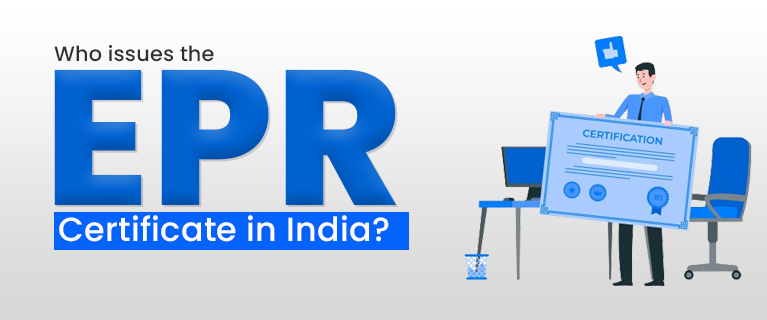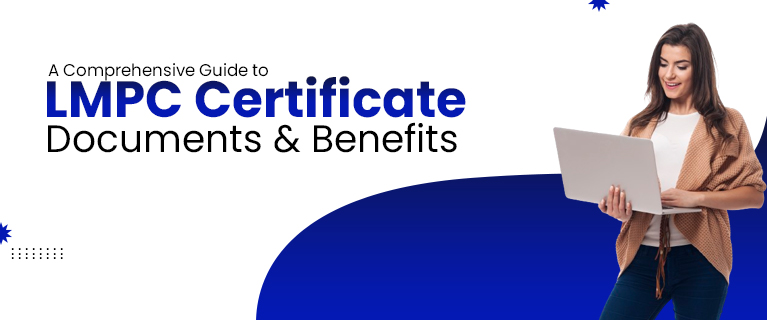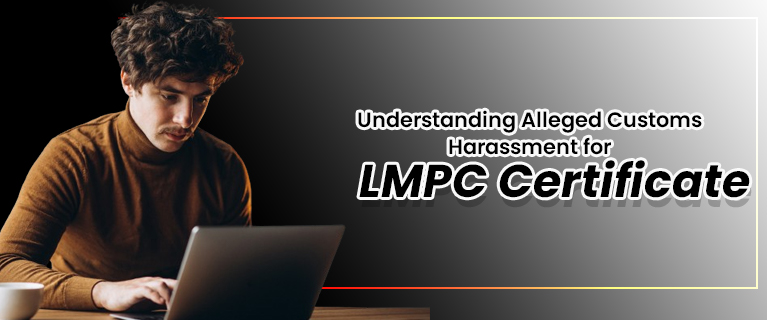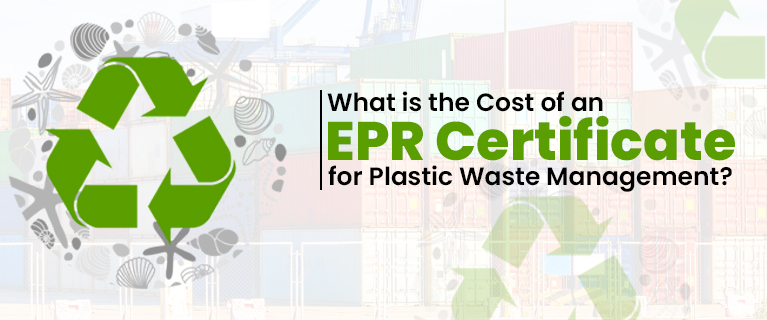Who issues the EPR Certificate in India?
In the contemporary global landscape, the imperative of environmental sustainability has risen to the forefront of discussions and policymaking. As societies grapple with the consequences of unchecked industrialization and consumerism, there is a growing recognition that responsible environmental practices are essential for the well-being of the planet. Within this context, the concept of Extended Producer Responsibility (EPR) has emerged as a pivotal mechanism for addressing environmental concerns associated with product life cycles.
In this comprehensive guide, we will delve deeper into each facet of EPR certification in the Indian context, providing a nuanced understanding of the mechanisms, authorities, application processes, producer responsibilities, and the dynamic challenges and opportunities that collectively shape the evolving landscape of environmental sustainability.
Read Also This – How To Get EPR Certification or License in India
Issuing Authorities of EPR Certification:
As we turn our focus to the Indian context, understanding the intricacies of EPR certification becomes paramount in unravelling the mechanisms that drive environmental responsibility in the country. EPR, in essence, is a policy approach that mandates producers to take responsibility for the entire life cycle of their products, including post-consumer stages. It represents a paradigm shift from the traditional "end-of-pipe" waste management to a proactive and holistic model that encourages sustainable production and consumption.
In India, the issuance of EPR certificates plays a central role in shaping the landscape of environmental responsibility. These certificates serve as official endorsements, indicating that a producer has met the requisite standards and obligations set forth by regulatory authorities. To comprehend the dynamics of EPR certification in India, one must delve into the key authorities involved in overseeing and regulating this process.
1. Central Pollution Control Board (CPCB):
At the forefront of environmental governance in India, the CPCB assumes a central role in overseeing matters related to pollution control. Regarding EPR certification, the CPCB plays a crucial role in establishing national guidelines and standards. Its influence extends to collaborating with State Pollution Control Boards (SPCBs) to ensure a unified approach to EPR implementation across the country.
2. State Pollution Control Boards (SPCBs):
The decentralized nature of environmental regulation in India designates SPCBs as key players. Operating at the state level, these boards work in tandem with the CPCB to implement EPR regulations within their respective jurisdictions. This collaboration ensures that EPR guidelines are not only nationally applicable but also tailored to address regional nuances.
Process of EPR Certification:
The application process for EPR certification involves a thorough assessment of a producer's adherence to environmentally sustainable practices. Producers must submit detailed plans outlining their strategies for waste collection, recycling, and disposal, demonstrating a commitment to minimizing the environmental impact of their products. Regulatory bodies, often collaborating with environmental agencies, scrutinize these applications to ensure compliance with established norms.
Producers bear a set of responsibilities integral to the EPR framework. These include designing products with environmental considerations, establishing efficient collection and recycling systems, and contributing to the overall reduction of waste. The emphasis on the entire life cycle of a product compels producers to adopt innovative approaches, such as eco-friendly packaging and materials, fostering a culture of sustainability within the industry.
However, the landscape of EPR certification in India is not without its challenges and opportunities. One of the significant challenges is ensuring widespread awareness and understanding of EPR principles among producers, consumers, and regulatory bodies. Additionally, the effective enforcement of EPR policies and monitoring of compliance pose ongoing challenges that require concerted efforts from all stakeholders.
Despite these challenges, there are notable opportunities within the EPR framework. Producers embracing sustainable practices can gain a competitive edge in the market, appealing to environmentally conscious consumers. Furthermore, fostering collaboration between government bodies, industries, and environmental organizations can lead to innovative solutions and streamlined implementation of EPR policies.
1. Application Submission:
The journey towards EPR certification commences with producers submitting detailed applications to the relevant pollution control board. These applications typically include comprehensive information about the product, the proposed waste management plan, and the financial commitments the producer is willing to make.
Read Also This – Guide To Getting EPR Certification Online
2. Evaluation and Approval:
The heart of the EPR certification process lies in the meticulous evaluation of these applications by regulatory authorities. Rigorous assessments ensure that proposed plans align with established environmental norms and regulations. Approval is granted when a producer's plan convincingly demonstrates effective measures for product waste management, fostering a cycle of responsibility.
3. Monitoring and Compliance:
Post-certification, certified entities find themselves under the vigilant eye of regulatory bodies. Regular monitoring is in place to ensure ongoing adherence to EPR guidelines. Non-compliance can have serious repercussions, ranging from financial penalties to suspension or revocation of the EPR certificate, emphasizing the gravity of environmental responsibility.
Role of Producers:
1. Responsibility for Waste Management:
Producers bear the weighty responsibility of formulating a comprehensive plan for managing the waste generated by their products. This involves the intricate orchestration of waste collection, recycling initiatives, and proper disposal methods. By placing this responsibility on producers, EPR initiatives aim to create a holistic approach to environmental sustainability.
2. Financial Commitments:
Financial commitment forms a critical pillar of EPR certification. Producers are not only obligated to outline a robust waste management plan but also allocate funds to implement it effectively. These funds may be earmarked for establishing recycling infrastructure, conducting awareness campaigns, or supporting other initiatives aimed at mitigating the environmental impact of their products.
3. Product Design and Innovation:
Producers play a pivotal role in fostering sustainability through product design and innovation. By prioritizing eco-friendly materials, efficient manufacturing processes, and easily recyclable components, they contribute to reducing the overall environmental footprint of their products.
4. Life Cycle Assessment:
A comprehensive understanding of a product's lifecycle is essential for producers. Conducting life cycle assessments enables them to identify opportunities for improvement in environmental performance at various stages, from raw material extraction to disposal. This holistic approach aids in making informed decisions to minimize environmental impacts.
5. Collaboration with Stakeholders:
Producers are encouraged to engage in meaningful collaborations with various stakeholders, including government bodies, environmental organizations, and consumers. Such partnerships facilitate the exchange of ideas, expertise, and resources, fostering a collective effort towards sustainable practices and waste reduction.
6. Research and Development for Sustainable Alternatives:
Investing in research and development for sustainable alternatives is a key responsibility for producers. This includes exploring new materials, processes, and technologies that can replace traditional, more harmful practices, contributing to a greener and more sustainable industry.
7. Transparency and Reporting:
Producers are expected to maintain transparency regarding their environmental efforts. Regular reporting on waste management progress, sustainable initiatives, and adherence to EPR Certification guidelines not only builds trust with consumers but also allows for accountability and continuous improvement.
8. End-of-Life Solutions:
Taking responsibility for the end-of-life phase of their products, producers should actively seek solutions for proper disposal or repurposing. This may involve partnering with waste management facilities, encouraging product take-back programs, or exploring innovative methods for responsible product disposal.
These points collectively emphasize the multifaceted role of producers in ensuring sustainable practices and environmental stewardship throughout the entire life cycle of their products under the rules & regulations of EPR Certification.
Read Also This – EPR Registration Online – Register Your Business with Ease
Challenges and Future Outlook:
1. Implementation Challenges:
The transition towards embracing EPR practices is not without hurdles. Some industries may face operational or financial constraints, posing challenges to seamless adaptation to EPR certification. Recognizing and addressing these challenges is pivotal for the successful implementation of EPR practices across diverse sectors.
2. Need for Collaboration:
A key facet of the future outlook for EPR Certificate in India lies in fostering effective collaboration. Bringing together producers, regulatory bodies, and environmental organizations is essential for a collective and impactful approach. Through shared efforts, a more sustainable and efficient waste management ecosystem can be established, transcending individual industry boundaries.
Conclusion:
In conclusion, the issuance of EPR certificates in India is a dynamic process involving collaboration between the CPCB, SPCBs, and producers. This process serves as a testament to the commitment towards responsible waste management and aligns with broader goals of environmental sustainability. As industries evolve, the adoption of EPR practices will play a pivotal role in mitigating the environmental impact of products throughout their entire life cycle. By understanding the nuances of EPR certification, stakeholders can actively contribute to a more sustainable and environmentally conscious future.










